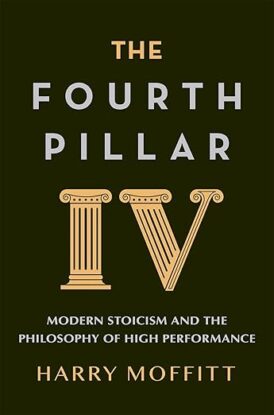The Fourth Pillar
Archie Mac |Published: 2024
Pages: 348
Author: Moffitt, Harry
Publisher: Pan Macmillan Australia
Rating: 4 stars

Once as a fresh-faced 18 year old I commenced an apprenticeship in the now all but forgotten trade of Graphic Reproduction. I remember the first lesson proffered from my ancient tradesmen, “once you’ve mastered the basics,” he said between puffing on his ever present cigarette, “you can start to move away from them and find your own way” but he added with emphasis, “make sure you’ve well and truly mastered the basics first”.
My old tradesmen would have had no doubt that Harry Moffitt had mastered not just the basics, but has probably forgotten more than most would ever know about his chosen subject. Still, having a thorough knowledge of a topic and being able to explain/teach it to a novice is a whole other skill.
As a complete novice in this field I can attest to Moffitt’s ability to comprehensively explain his subject. As I understand it the first three pillars are the: Physical, Psychological and Social. Moffitt espouses the benefits of all three, but assesses, based on observation and experience that something is missing. Hence his belief that a fourth pillar needs to be incorporated.
The fourth pillar advocated by Moffitt is Philosophy, in particular drawing from the ancients; Stoics, Spartans, and some of the great philosophers. Another often mentioned is the legendary Australian athletics coach, Percy Cerutty who trained some of the greats including Herb Elliott. Cerutty earns so many mentions that it’s close to a mini biography. Given his wisdom and ground breaking training methods, readers of The Fourth Pillar may be inspired to read a full biography on Cerutty.
Apart from incorporating the ancient philosophies, Moffitt makes the point that humans are exactly that: human, and so, susceptible to all the problems which can impact them. This is opposed to the comparison between humans and machines which is often indulged by commentators and coaches. At first glance this appears to be a minor distinction, however it demonstrates the essence of the book and just why the fourth pillar is required.
Apart from Cerutty, Moffitt covers a multitude of subjects, including the South Sydney Rugby League Club, the Collingwood AFL Football Club, and even the controversial Ashes Lord’s Test of 2023. Moffitt was at the ground for the fourth day, and in a London pub for the exciting fifth day when Johnny Bairstow was controversially run out. Moffitt criticises the Aussie win-at-all-cost attitude, and believed Pat Cummins should have called Bairstow back. Ala Wally Grout in the 1964 Ashes, refusing to run out Fred Titmus after he slipped on wet grass. Grout famously said, running him out would not have been cricket.
This book is wonderfully set out and is a credit to all those involved in its production. Each chapter is only a few pages long, and Moffitt is a fine writer. It’s one of those books where you intend to read a few pages, but end up staying to read 100 pages. You could see this book not only being utilised by coaches and sporting clubs, but also people just wanting to find that missing piece in their own lives.






Leave a comment